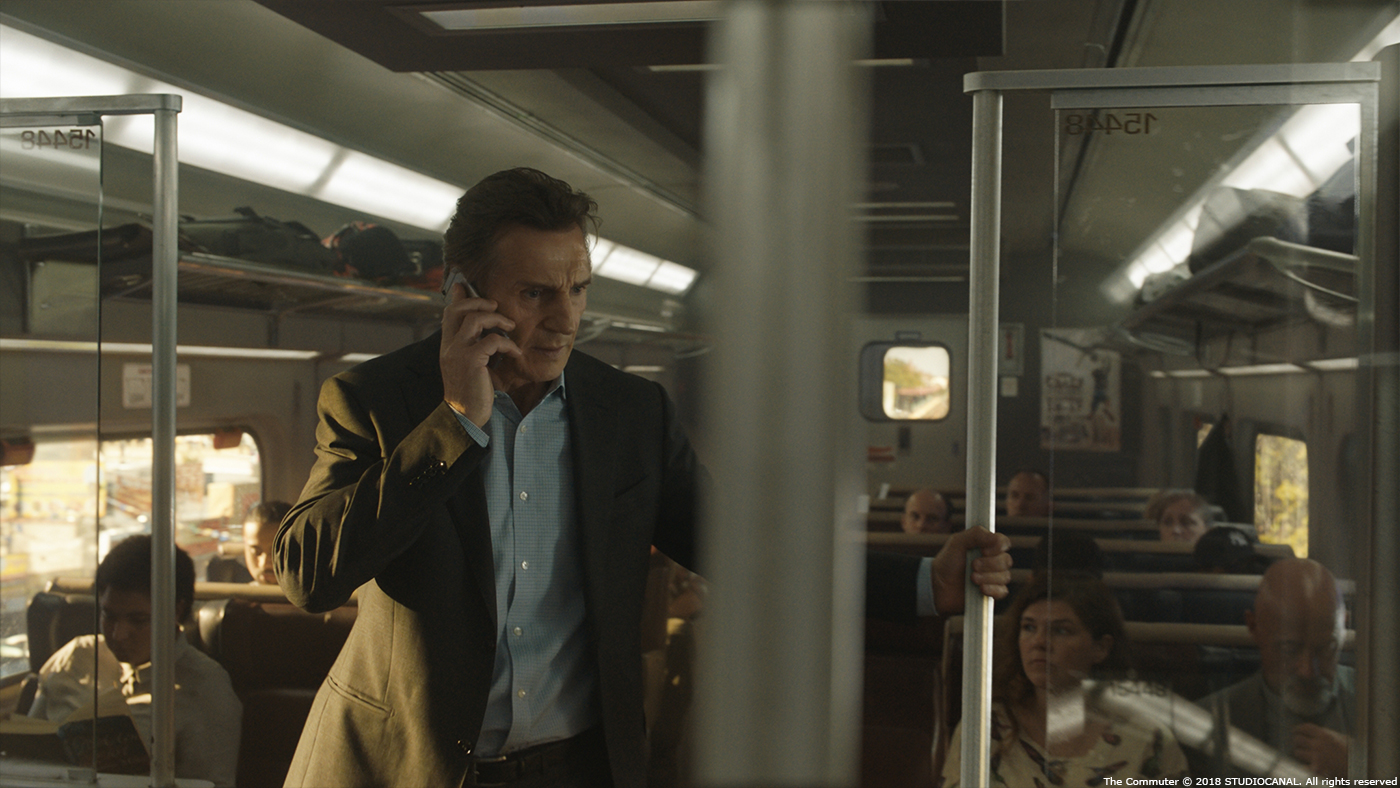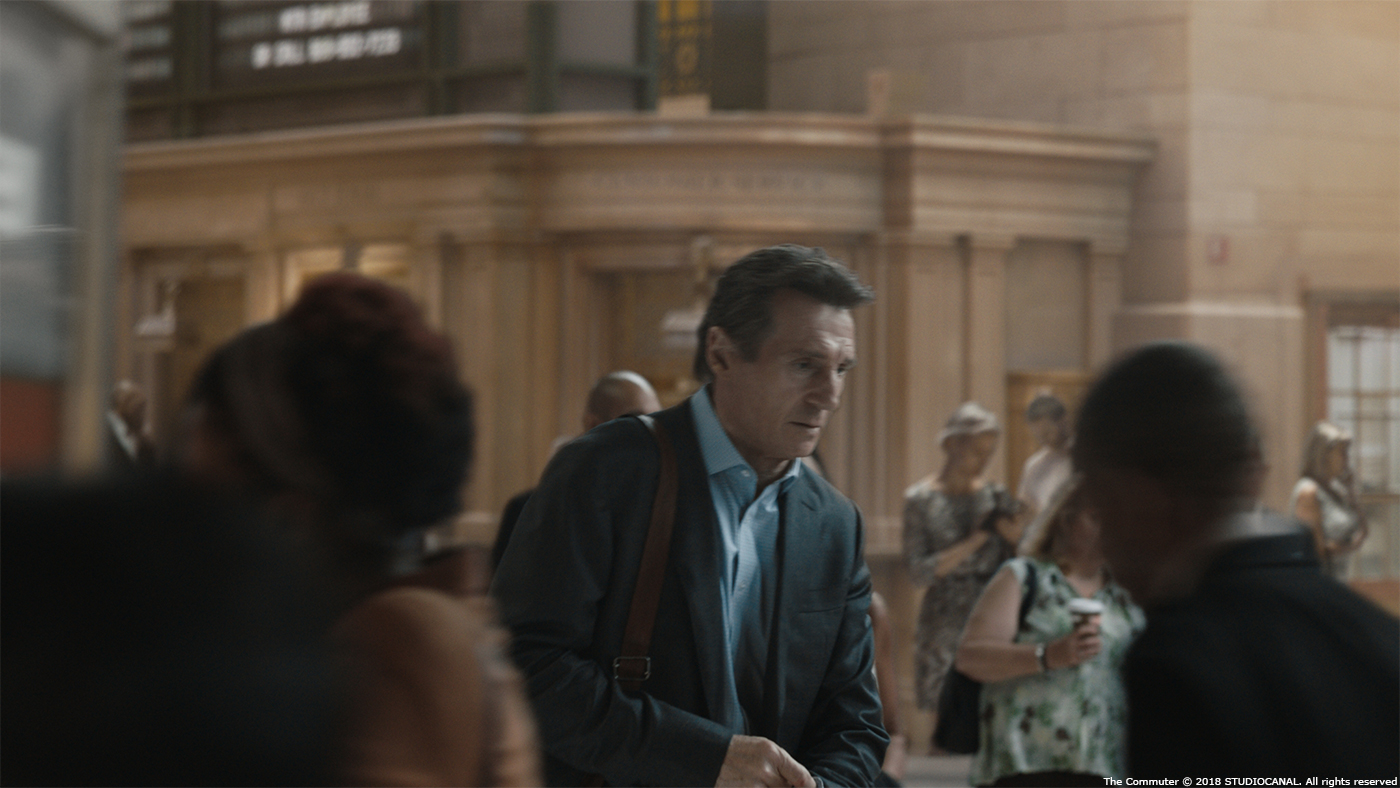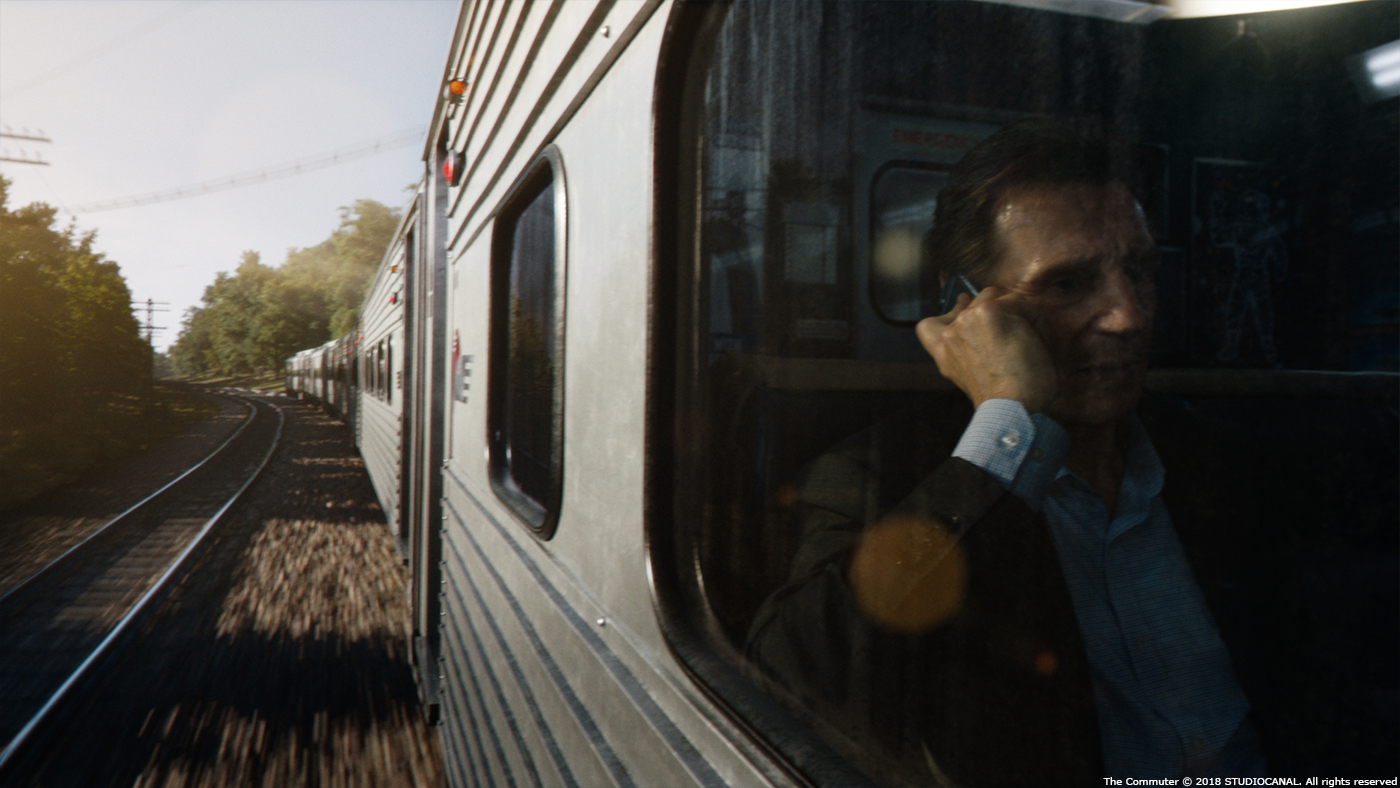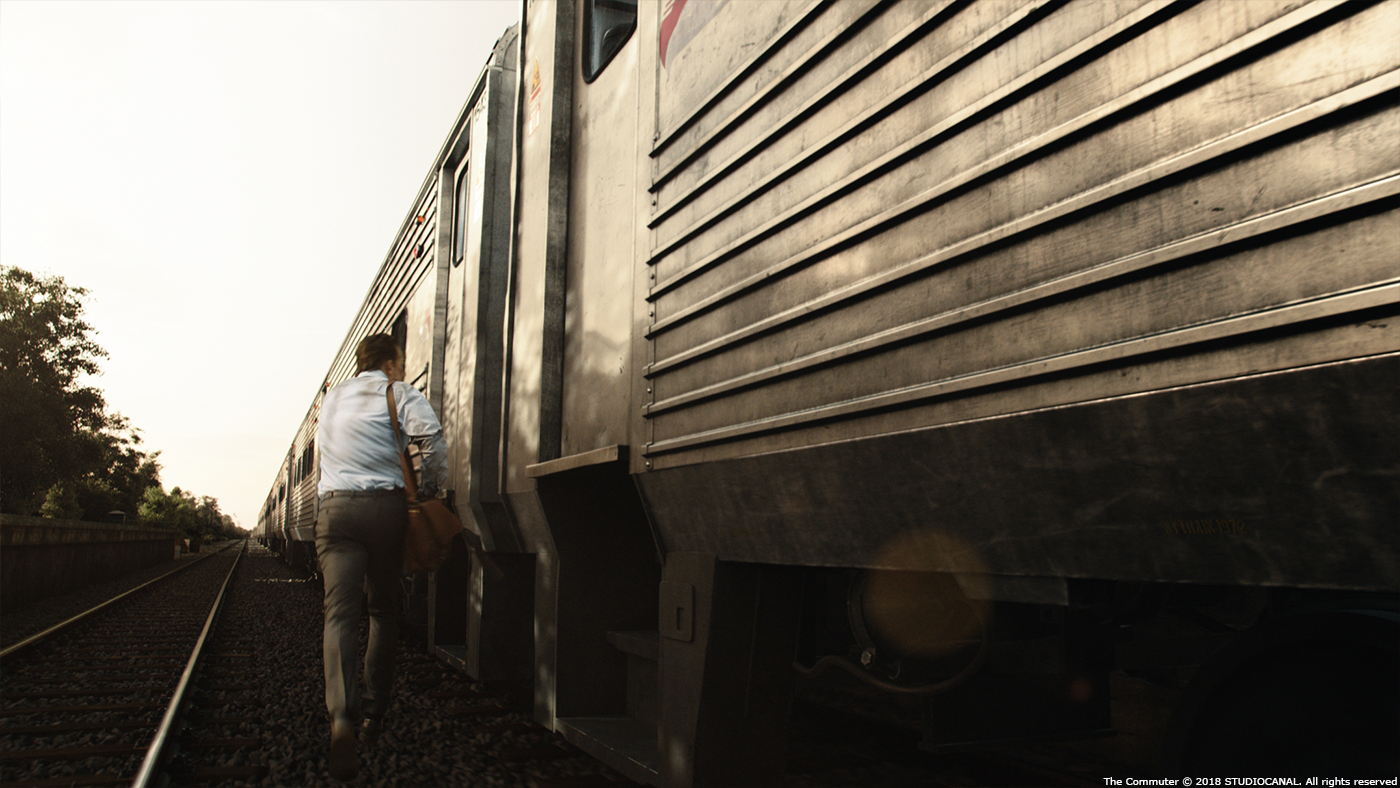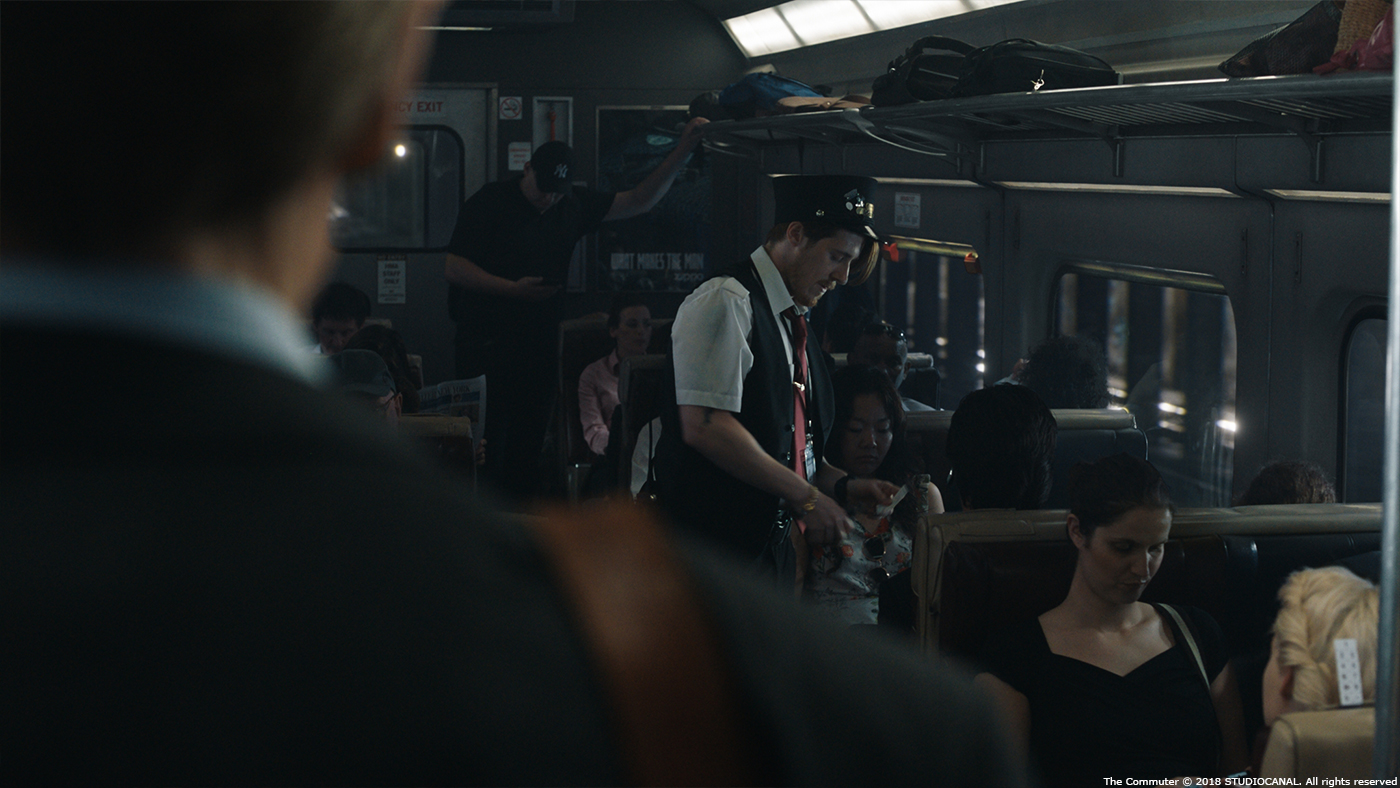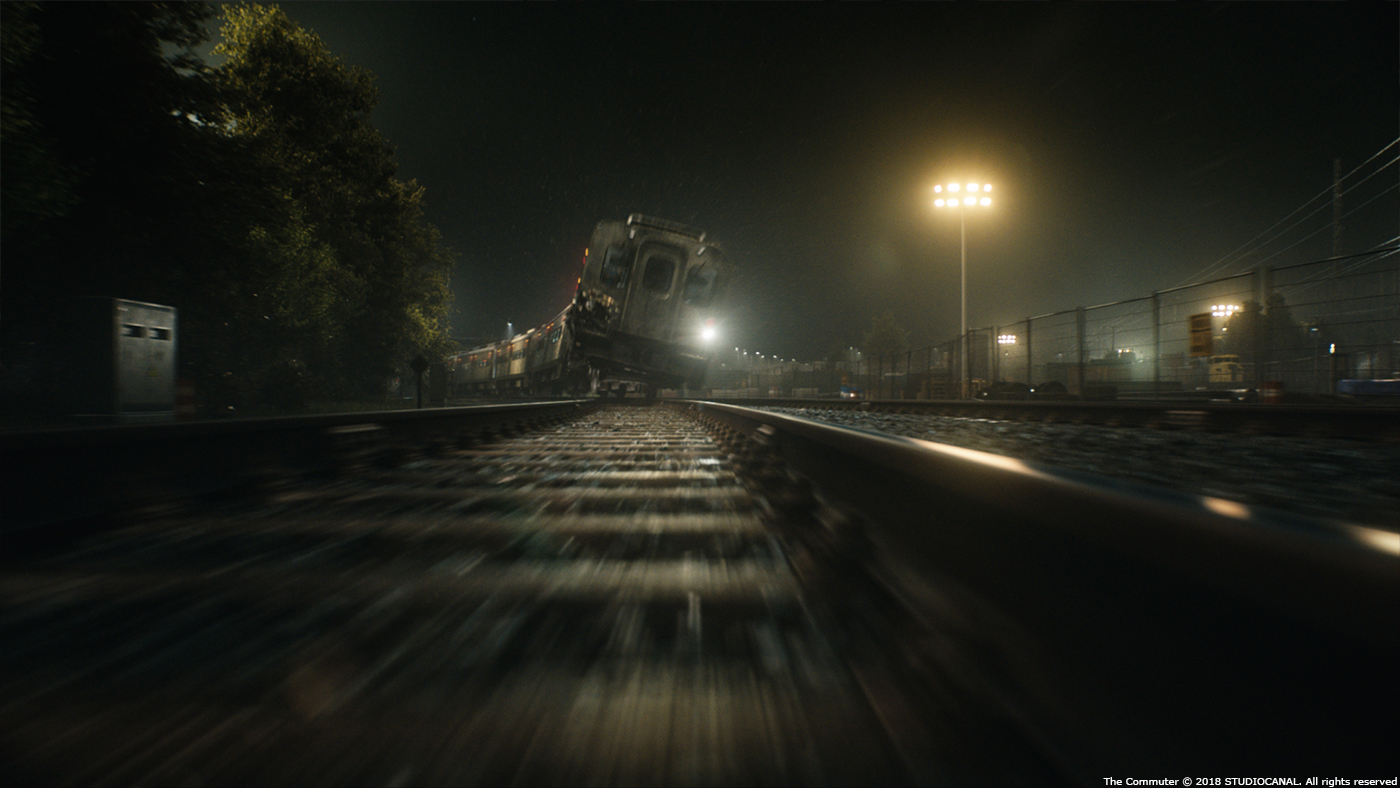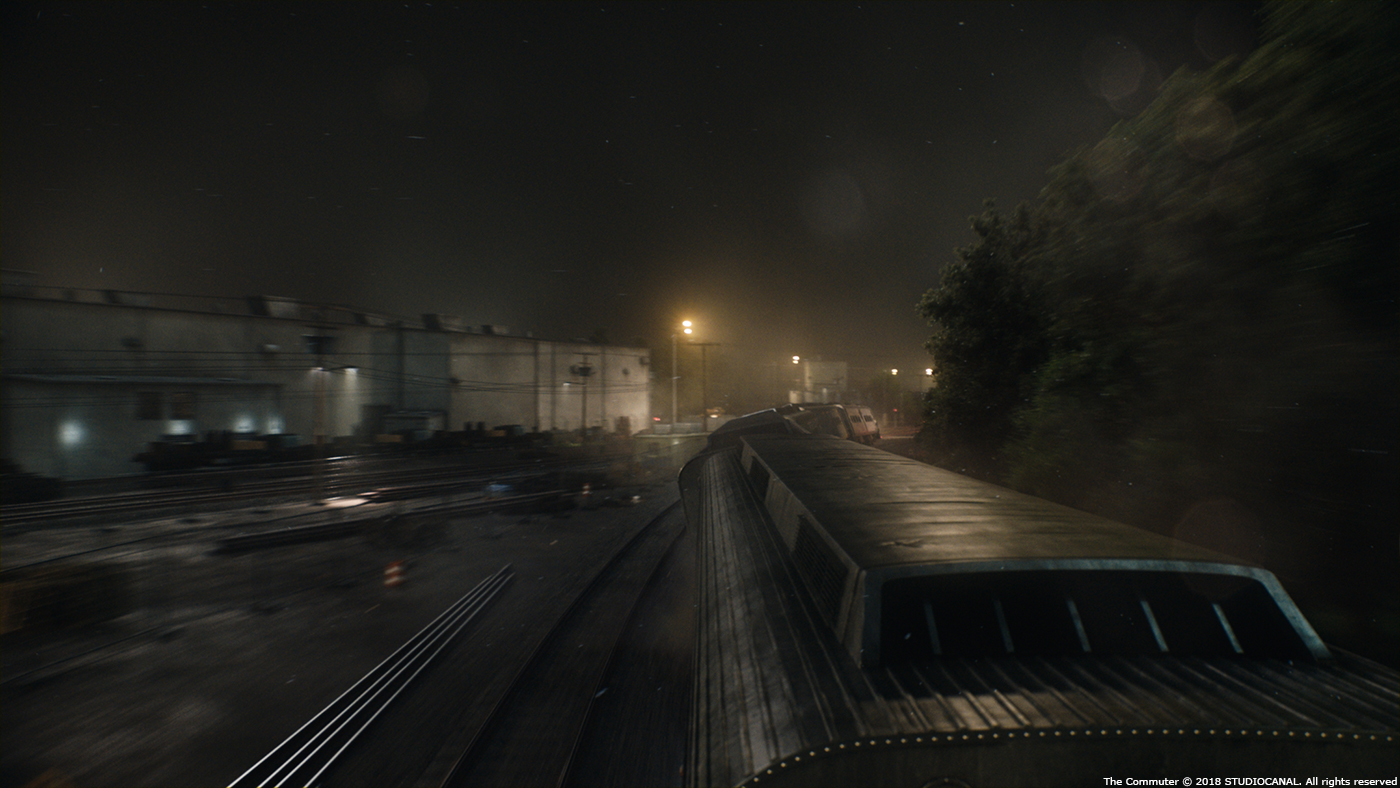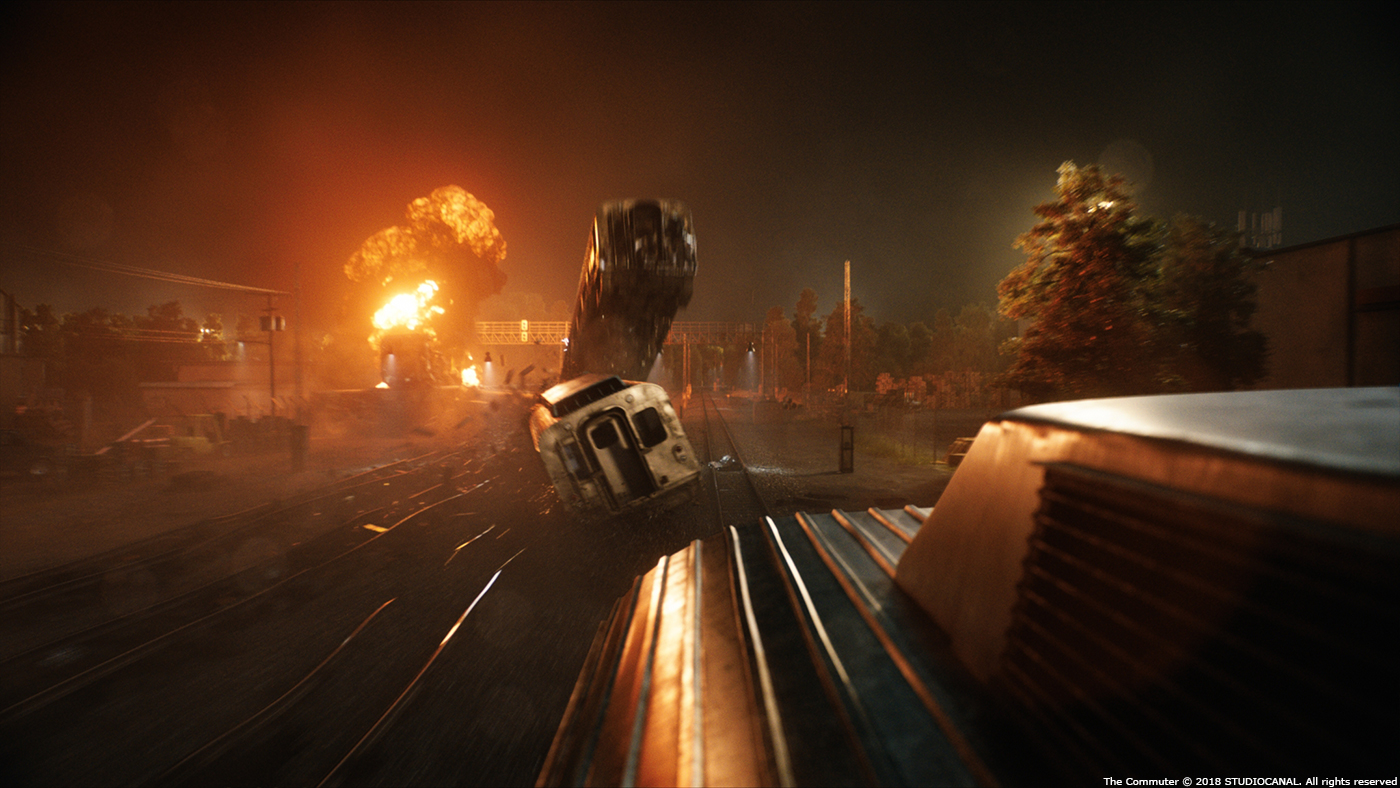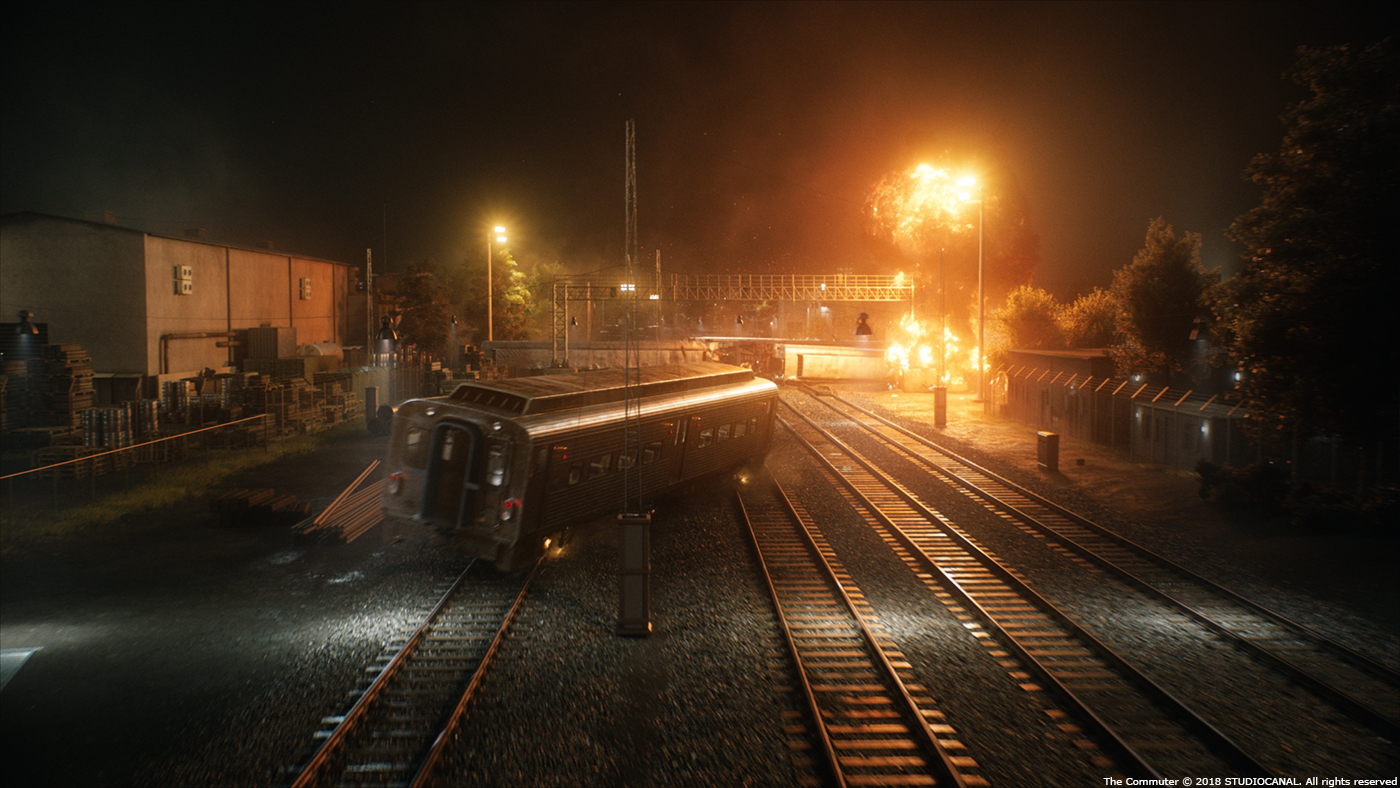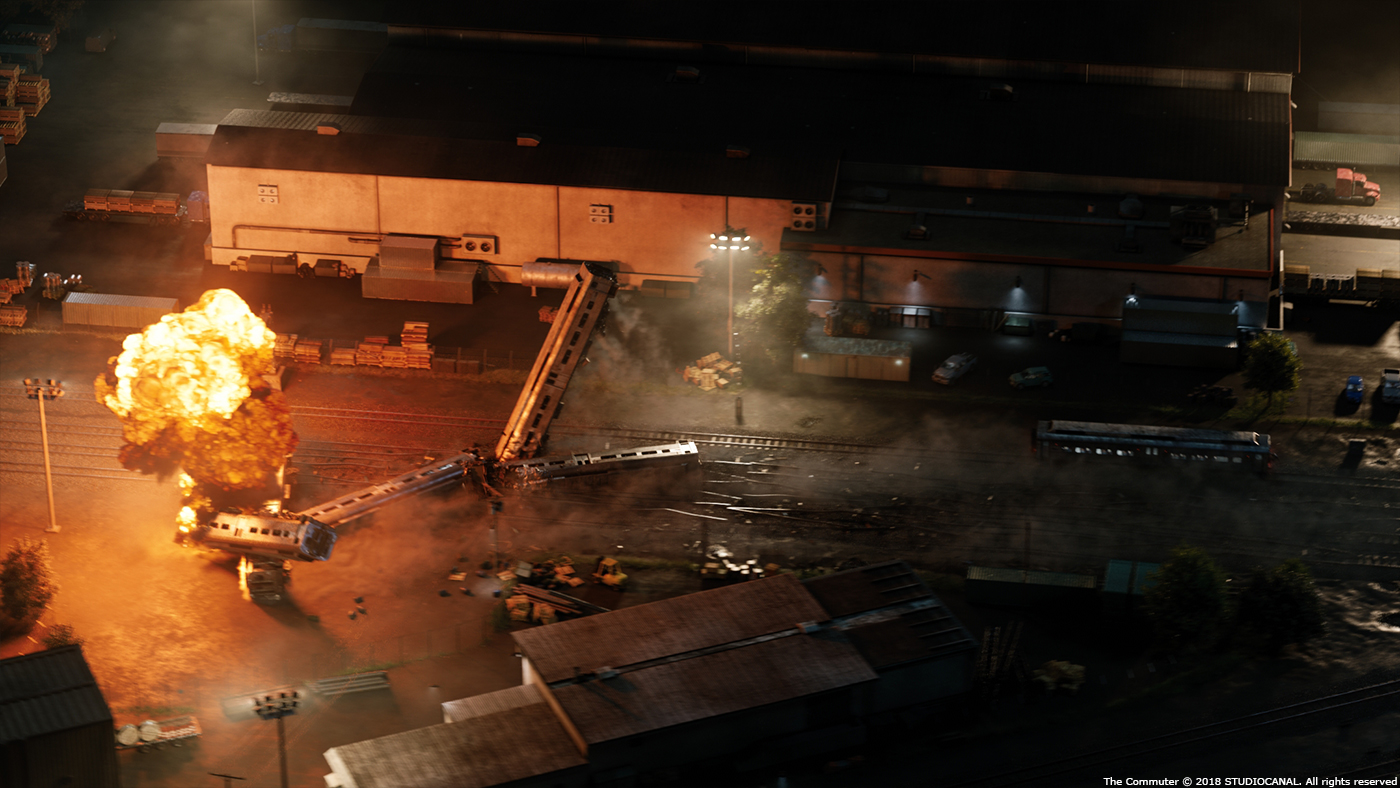Stephane Paris explained the work of Cinesite on PIRATES OF THE CARIBBEAN: ON STRANGER TIDES in 2011. He then joins MPC to work on MAN OF STEEL, THE AMAZING SPIDER-MAN 2, EDGE OF TOMORROW, GUARDIANS OF THE GALAXY and INTO THE STORM. In 2014, he returned to Cinesite to oversee the effects of THE LAST WITCH HUNTER.
How did you and Cinesite get involved on this show?
Cinesite had worked with VFX Supervisor Steve Begg previously on productions including SPECTRE, SKYFALL, and INKHEART. Having created effects with him for the Bond films, he was confident that Cinesite could create the required high quality invisible effects for the action-heavy sequences.
How was the new collaboration with director Jaume Collet-Serra and VFX Supervisor Steve Begg?
It was great to be the main vendor and to have such close interaction with Steve and director Jaume Collet-Serra, taking the lead directly from them.
What was their approach towards the visual effects?
We interacted with Steve mainly. The clients’ approach was to concentrate on the action, performances and story during production, so we lit and filmed the bluescreens carefully, ensuring reflections were minimized and the bluescreens were secure in order to allow creative freedom to Jaume during filming. We were confident that by using this approach we would have what we needed for the visual effects at a later stage.
What are the sequences made at Cinesite?
Cinesite delivered a range of sequences for this fast-paced action thriller, from train carriage composites right through to entirely CG shots for the spectacular climactic train crash sequence. The visual effects team also created shots near the film’s opening which demonstrate the repetition of Michael’s daily commute as well as a few action scenes such as the fight aboard the train, the bomb explosion and the releasing of the carriages. It was a lot to get through!
How did you organize the work at Cinesite?
We worked on THE COMMUTER in both our London and Montreal studios. We have worked together previously, notably on SAN ANDREAS and more recently on INDEPENDENCE DAY: RESURGENCE, so I had experience of working across both locations. Most of the full CG heavy shots were completed in London, while the environments, some of the full CG shots and 2D backgrounds were completed in Montreal, which also completed the train station sequence which appears early in the film. My time was split fairly evenly between both locations, so I would spend 2-3 weeks in London followed by the same amount of time in Montreal. Steve never needed to visit the Montreal studio, but he was very hands on and involved throughout. He visited our London studio at least twice a week, where we used the RV system to review both the London and Montreal work.
There is a beautiful time-lapse shot inside the Grand Station Central. How did you create it?
It was not possible for the sequence to be filmed on location, so the visual effects team captured photogrammetry at the iconic station, which was later used to digitally recreate the environment as re-projected photographs. This 2.5D approach gave us more control over the shot’s composition and the ability to create the seasonal lighting.
Can you tell us more about the filming of it and the crowd creation?
Multiple passes of Neeson were filmed at Pinewood Studios on a tiled floor against bluescreen using a motion control camera, wearing various outfits. He walked a pre-determined path each time at the same pace to ensure the transitions would work. 50 extras were also filmed walking at various speeds to achieve the illusion of speeding up: at 4fps, 6fps, 12fps and finally 24fps. These people were rotoscoped off of the bluescreen and motion blur added to the final shot.
We interacted closely with Jaume about how fast the crowds should move. Ultimately, the earlier part of the shot uses real people shot using a motion control camera, but as the people move more quickly, the crowd becomes fully CG, with a seamless transition between the two.
Let’s talk about the train. Can you explain in detail about his creation?
I was on set at Pinewood Studios, just outside London, for about 6 weeks alongside Steve, where they had set up two stages. The first was a single train carriage adapted and dressed to look like multiple carriages; this was used to film all the main action on board the train. The carriage was surrounded by blue screen and shot on a hydraulic system to give realistic shake and movement.
The second stage set up at Pinewood was mainly used for the stunts, and consisted of sections of two rear parts of the train on a raised 15-meter platform. An example of where this was used would be a sequence where Michael (Neeson) jumps from one moving train to another at the climax of the film.
Once the action was shot on set the team created a full CG train of six carriages which was modelled, both inside and out, for wider shots where the various locations along the route were established. The art department sent references including a blueprint for the look of the train, but the underneath was entirely made up by the VFX team. This area needed to be created at particularly high resolution, with textures, grease and surface scratches which would stand up to very close scrutiny. This was particularly important for a sequence where Michael, in an effort to engage the emergency brake for the dangerously speeding train, climbs underneath and hangs precariously just above the track.
What was the main challenge with the train?
By this time night has fallen, and we needed to integrate our CG train with the real location plates filmed from a helicopter. One of the most challenging shots in this sequence shows the initial bomb explosion, where it destroys the brakes under the train. This entirely CG shot includes train, environment, brakes, explosion FX, tracks, smoke, sparks and CG water complete with explosion reflections (we are alongside the Hudson river).
This was a long sequence that was shot under different lighting conditions and environments that had to play within the CG environment surrounding it. There were a lot of live-action lighting cues that were very difficult to reconcile with the creative requirements for time-of-day and location. Making this work required a lot of back and forth with layout and lighting to get buildings, trees, and other occluding objects lined up properly with the on-set look and camera cuts. There was also significant animation work required to reconcile live-action performances with the physics of an accelerating train and the optical illusions introduced by shooting from a low-angle with a wide lens against a large object like a train and a foreground live-action character.
There is a lot of different lighting conditions. How did you handle this aspect?
// Subway lighting: Once the action was shot in the dressed bluescreen carriage at Pinewood Studios the team went to work building a flexible CG tunnel asset for the environment which could be used in multiple shots. For the subway sequence the walls, platforms and exteriors were all created in CG, complete with cable systems, columns, tracks etc. and joined together to create a kilometre-long section of tunnel, rendered through 8 cameras and projected onto geometry. This meant that for any shot we could track the camera, drop our asset into the environment and have the required control over the lighting to ensure it matched the lighting which had been shot of the actors. Using this system, we were also able to achieve continuity between shots and limit environment repetition. Although the set up was heavy, the flexibility that this asset gave us really paid off and we ended up using it in approximately 200 shots.
//Overground lighting: When it came to the ‘over ground’ sequences reflections and lighting shot with the actors often did not match the selected daylight exterior environments, which required clean-up and extensive keying; sometimes toning down the live action was required, and at other times it was necessary to add additional lighting to better synchronise the elements together.
Can you tell us more about the background plates creation?
Whenever the audience sees the outside of the moving train on route to Tarrytown it is CG, as well as the environment, apart from a few shots filmed from a helicopter. The daylight environment shots of the train formed the main body of Cinesite’s work, approximately 400 shots. To create these environments, Steve and his team went in and around New York and filmed 360° elements from the back of a truck, as well as from trains and a helicopter. While the journey is based on a real route it was not possible to shoot the exact line from the story, so similar environments and locations were selected, based around New York’s Northern Line. Backgrounds were then picked by Steve and editorial and matched with the appropriate section of the action.
There is an intense fight inside the train shown as a long continuous shot. How did you approach it?
This “shot” was a stitch of 14 different takes blended together to look like one long shot. The shot included action inside train carriages with interactive live-action lighting effects. An effort was made by the crew to line up subsequent shots to match the positions of the actors and camera in previous shots. However, the perspective of the carriage, camera zooms and background deformation often were not smooth and it was necessary to re-project the carriage interior onto geometry to give more camera control over the shots for the multiple required transitions.
At one point, Michael uses a guitar to defend himself. For safety reasons, in most shots the guitar is CG and is progressively damaged throughout the sequence; ultimately only the neck of the instrument remains, so careful continuity was required to show its gradual destruction. Similarly, a small axe was also created in CG which Oliver tries to hit Michael with. Various FX like CG glass for smashing windows and impacts on the train structure were created as the fight becomes progressively violent.
At the climax of the battle, as Michael’s head is pushed out of a broken window towards an oncoming train, the entire exterior environment and train are CG and the camera’s POV moves seamlessly from inside to outside, then back inside again as Michael manages to surprise Oliver by switching positions.
Can you explain in detail about the creation of this shot?
We had to create a seamless CG background to be displayed outside the carriages that included this interactive lighting. In addition, despite the excellent quality of the takes, there were significant camera and pose differences take-to-take, in what was supposed to be continuous action. This required a lot of creative matchmove and comp work to hide the transitions. There were also bridging CG elements that had to track across these takes.
The train trip ends with a big crash and lots of explosions. How was this sequence choreographed and then created?
The team built a 2km asset of the environment approaching Beacon and the wide station yard, dressed with buildings, tracks, trains and general industrial content. The CG environment included a large curved section of track to match with the action. The environment needed to align with a section of real set, captured using photogrammetry, which was built at Longcross for shots where the passengers disembark the end carriage.
The pre-production phase, where most of the setup was created, happened quite early on in the show. At that time, the previsualisation for the full CG shots was not totally locked off, and obviously some adjustment was still required for editing, but also camera movement and set dressing. We knew that the train, once derailed, would have to hit some electrical pylons, breaking them and making wires snap. The big question during pre-production was which pylons (we had at least 4 variations) and how we could keep to the schedule, pre-empting possible last-minute changes. We came up with a procedural solution, switching from a 2 mast set to a 3 or 4 mast set, so that we would not need to start the shot from scratch all over again if the requirements were to change.
The impact of the train crash itself required realistic simulations of bending and crumpling metal, dynamic interactions between the derailing train and the destruction of the environment, and the generation of a large number of secondary dust and fire/smoke simulations from the resulting carnage.
Can you tell us more about the creation of the FX elements for the crash?
FX were key, with flying gravel, breaking and deforming tracks, exploding sleepers, fog, dust, smoke and fire. Houdini was mainly used, with some Maya for falling pieces of train. Simulated destruction of the train was also created using Houdini, with some internal set up.
The extent of the FX was a challenge to the team, as well as ensuring that continuity was maintained in the destruction elements. The compositors added additional smoke and dust; the volumetrics were controlled to keep a good balance and deliver additional drama. The compositors did a fantastic job, enhancing the shots artistically. They really made them beautiful!
How did you create the digital double for Liam Neeson?
Digital versions of the characters fighting were created to aid the transitions between the plates, as well as the environments and train infrastructure in many instances, so that the camera could move freely through the action and the divisions between the carriages. The stunt actors’ faces were replaced with the actors in several, more physically demanding shots.
What was the main challenge on this show and how did you overcome it?
One particular challenge was maintaining the destruction continuity across the crash sequence of shots as the train progressively derailed and crashed, with a high number of re-simulations needed to the train and environment destruction whenever there was a change to one of these in a shot earlier in the sequence.
Devising efficient workflows using in-house tools to streamline this where possible was key in order to deliver a large number of FX-heavy destruction shots whilst maintaining accurate continuity and remaining responsive to the clients’ notes during the show.
How long have you worked on this show?
In total, we worked on THE COMMUTER for about a year, beginning with principal photography in August 2016 and delivering in August 2017.
What’s the VFX shot count?
862.
What is your next project?
It’s too soon to tell, but I’ll give you a clue it’s a ‘little’ project!
A big thanks for your time.
// WANT TO KNOW MORE?
Cinesite: Dedicated page about THE COMMUTER on Cinesite website.
© Vincent Frei – The Art of VFX – 2018


